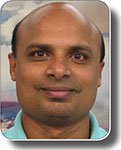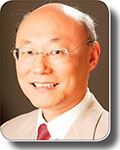Evaluation of numerical modelling for a compact down-hole subsea gas-liquid separator for high gas content
Shakil Ahmed A , Mohamed Nabil Noui-Mehidi B , Jamal Naser’s C , Gerardo Sanchez Soto A and Edson Nakagawa AA CSIRO Petroleum Resources
B Saudi Aramco
C Swinburne University of Technology
The APPEA Journal 49(1) 433-440 https://doi.org/10.1071/AJ08027
Published: 2009
Abstract
This paper describes the computational fluid dynamics (CFD) modelling of a laboratory scale gas-liquid separator designed for high gas content. The separator consists of two concentric pipes with swirl tube in the annular space between the pipes. The gas-liquid mixture comes tangentially from the side inlet and the system works with a combination of gravity and centrifugal forces to achieve a high-efficient gas-liquid separation.
Three dimensional transient multi-phase fluid flows were solved to predict the velocity and volume fraction of each phase. The standard k- turbulence model was used for turbulence closure. The performance of the gas-liquid separator was visually established for a range of gas flow rates (271–495 L/min), with volume fraction (VF) =0.874–0.985 by observing the liquid carry over (LCO) regime where liquid was carried out in the gas stream. The liquid and gas flow rates at which the LCO was observed defines the upper operational range of the separator.
Air-water mixture was used in the numerical simulations to keep consistent with the experiments. The pressure between the inlet and exit was validated against the experiments for different air-water flow rate combinations. The values were matched reasonably well for high air flow rate (495 L/min, VF=0.985) but were under-predicted for low air flow rate (271 L/min, VF=0.874).
The air and water were mixed upstream of the inlet in the experiments and the pressure was measured at the start of the inlet. In case of numerical simulation the air and water were mixed at the inlet. This might cause the deviation of pressure when the air flow rate was low.

Shakil Ahmed completed his undergraduate program from the Department of Mechanical Engineering, Bangladesh University of Engineering and Technology, Dhaka, Bangladesh in 1998 and joined as a lecturer in the same department. He was involved in many academic activities and offered many courses. At the same time he completed a MSc in mechanical engineering in 2001. After successful completion of his MSc program, he enrolled as a PhD student in Swinburne University of Technology, Hawthorn, Victoria, in 2001. His PhD program was funded by Cooperative Research Center (CRC) for Clean Power from Lignite, Mulgrave, Victoria, Australia. He started working at CSIRO Material Science and Engineering as a postdoctoral fellow from July, 2005. After finishing his Postdoctoral program recently, he joined CSIRO Petroleum Resources as a research scientist and works on the subsea separation project. He participated in many workshops, and has published and presented his works in several international journals and conferences. Shakil.Ahmed@csiro.au |

Mohamed Nabil Noui-Mehidi worked on this paper while employed by CSIRO Materials Science and Engineering. He is now employed by Saudi Aramco. Mohamed Nabil Noui-Mehidi is a petroleum engineer at the EXPEC Advanced Research Center (ARC) of Saudi Aramco Oil Company since joining in late 2008. He holds a PhD in resource and energy science from the University of Kobe, Japan. Between 2002 and 2008, he worked as a research scientist at the Thermo-Fluids group of the CSIRO-CMSE division where he led a project on subsea and downhole multiphase separation. His research activities are related to multiphase flows and development of new technologies devoted to upstream oil and gas production and he has published 60 papers in different aspects of fundamental and applied fluid dynamics. mohamed.nouimehidi@aramco.com |

Jamal Naser’s 26 years of research activity has close association with industry. While investigating complex industrial problems, his research always focusses on fundamental scientific challenge. One of the most complex branches of computational fluid dynamics (CFD) science is multiphase flow. Dr. Naser has managed to develop a number of new mathematical models, improving the understanding and incorporating more physics into multiphase flow modelling (multiphase separation). Many of his research projects involve complex chemical reactions (combustion) coupled with complex geometry—a difficult challenge for modelling, which sometimes can only be overcome by inventing a new way out. In last seven years he has successfully completed the supervision of a number of PhD students and trained a number of post doctoral fellows; all who worked with him are very well placed in various research organisations in Australia and overseas. Dr. Naser has successfully attracted and completed a number competitive research grants/projects, published the findings in more than 100 journals and conferences. Dr. Naser has managed to develop national and international research linkages. JNaser@swin.edu.au |

Gerardo Sanchez Soto is a chemical engineer with a Master Degree (Universidad de los Andes, Vzla) and PhD in chemical engineering (Birmingham University, UK). In 1986 joined PDVSA Intevep working in the Orimulsion Technology Group. During that period, he has held several positions as project leader and group leader of technical areas related to emulsion technology and commercialisation of technologies. In 2005 he joined CSIRO Petroleum working as leader of the Near Wellbore Characterisation project. He is currently leader of the Subsea and Well technology group stream focussed on development of new technologies for offshore gas fields. His areas of interest are hydrates in flow assurance, compact separation technologies and production optimisation. Gerardo.Sanchezsoto@csiro.au |

Edson Nakagawa leads CSIRO’s Ocean Based Industry Development and Growth Theme within the Wealth from Oceans Flagship, with focus on developing technologies to add value to most promising and prospective ocean based industries. This theme focusses particularly on reducing remote gas exploration and production costs in deepwater scenarios through the Platform Free Fields research program. Main capabilities include flow assurance (hydrates), separation technologies, multiphase flow, rock physics, reservoir characterisation, geomechanics, shale research, enhanced oil recovery, production optimisation and designer fluids. Edson’s research experience spans more than 26 years and encompasses the management of systemic research and development programs in the oil and gas industry, focussing on delivery and deployment of deepwater technologies at field level. Edson holds a MSc in petroleum engineering from the University of Ouro Preto, Brazil, on risk evaluation model and decision criteria for development of an oil field, and a PhD from Louisiana State University, USA, on experimental verification of the behaviour of gas influxes in vertical and slanted sections of oil wells during drilling operations. Dr Nakagawa has more than 50 publications and has served on numerous technical publication review committees in the oil and gas industry. Edson.Nakagawa@csiro.au |


